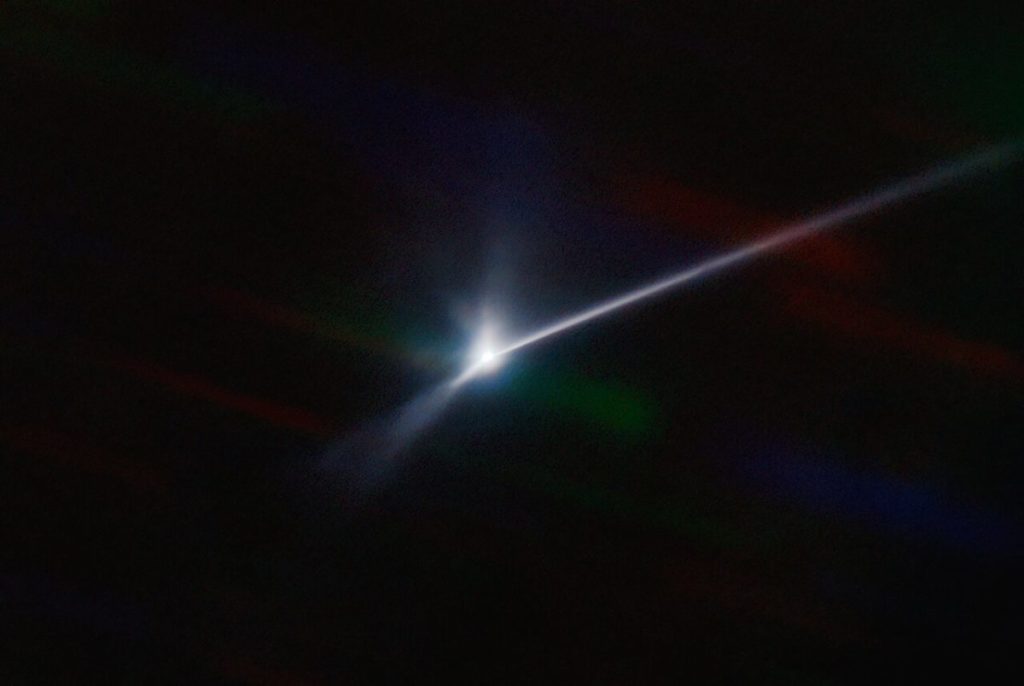
The comet-like debris trail is shown stretching from the center to the right-hand side of the image. Credit: CTIO/ NOIRLab/ SOAR/NSF/AURA/Teddy Kareta (Lowell Observatory), Matthew Knight (U.S. Naval Academy).
Scientists have captured a stunning image of an extensive plume of debris emanating from the asteroid moon Dimorphos. The plume stretches more than 600 miles (10,000 kilometers) and was created when the DART spacecraft impacted the asteroid Dimorphos on September 26.
Lowell Observatory’s Teddy Kareta and longtime Lowell associate Matthew Knight, now with the United States Naval Academy, teamed to take the image as part of an extensive post-impact study of Dimorphos’s motion and behavior.
The debris plume looks like a comet, with ejected material being pushed away from the parent body by the Sun’s radiation pressure. The team captured the image two days after the refrigerator-sized Double Asteroid Redirection Test (DART) spacecraft impacted Dimorphos to determine if a spacecraft can change the orbit of a celestial body. The mission represents the first test to see if such deflection technology may be viable as a means of planetary defense, in the event that a potentially hazardous space rock headed toward Earth.
Astronomers will make additional follow-up observations from observatories around the world, including Lowell Observatory and its 4.3-meter Lowell Discovery Telescope and 1.1-meter Hall Telescope. They will need up to two month of such observing to determine if DART successfully altered the orbit of Dimorphos.